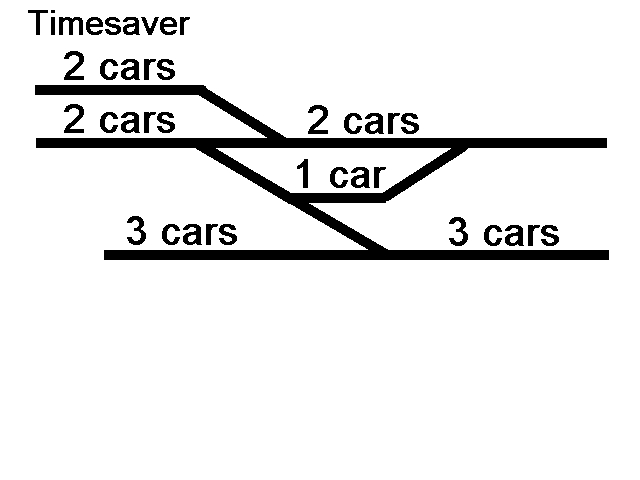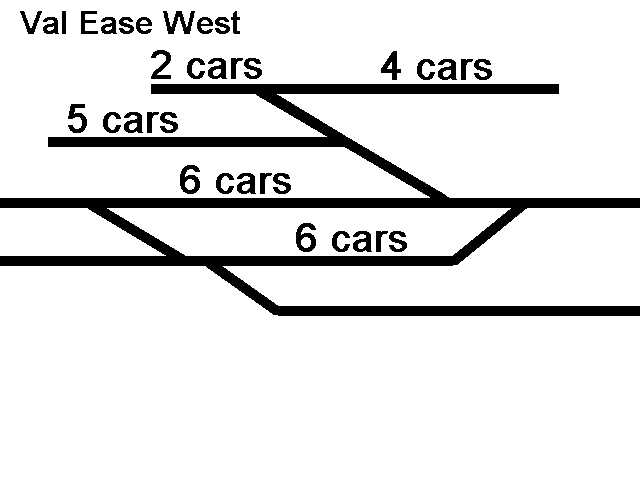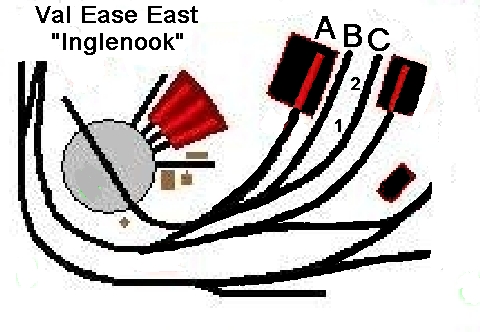The Val Ease Central Railroad ©
Taking Z Scale to the Public Around the World
(Text and photos © Copyright Jeffrey MacHan)
Last Spike: "Let the Puzzles Begin!"
*100% written on public transportation (city bus, Beechcraft King Air 350, Via Rail, in that order!)
Today's Z scale has come a very long way in a relatively short time. For instance, several *affordable* technological advances over the last year or so have helped to accelerate the shift from running trains at relatively high toy-like "velocities" to true-scale speeds:
- flywheel-equipped locomotives designed with state-of-the-art high precision gearing and efficient motors such as the Micro-Trains Line GP35
- back EMF-enabled speed regulators like the Jeremy Brandon-designed System Jörger controler.
Add the Micro-Trains Line Magna-matic coupling system to the mix and, why not, a Glen Chenier-inspired hand-held uncoupling wand and it becomes possible to spot cars anywhere on a layout, in a prototypical manner. Note: for Märklin couplers, the System Jörger magnetic uncoupling conversion provides similar functionality.
Z-scalers can now "operate" just like our "serious" larger-scale brethren (think timetables, car-forwarding, train orders, switch lists, rule books!). Even more importantly, from my point of view, we can "play" just like our "less-serious" larger-scale brethren.
Over the next year, I plan to take you on a FUN-filled journey with these stops along the way:
Puzzles -> Game-based train orders -> Operations
Many North American readers may be familiar with John Allen's "Timesaver" switching game. European readers will more likely have encountered Allen Wright's "Inglenook Sidings" shunting puzzle. Yes? No? Not really? Fortunately for both you and me, fellow Z-scaler Adrien Wyman has put together an extraordinary web resource to help fill that knowledge / memory gap.
http://www.wyman.info/ShuntingPuzzles/index.html
I'll let Adrien fill you in on the rules for play and the various incarnations of the above puzzles since he has done such a masterful job of it. Still, I know that you'd never forgive me if I didn't supply you with the basic puzzle configurations.

John Allen's "Timesaver" switching game

Allen Wright's "Inglenook Sidings" shunting puzzle
Switching Puzzles on the Val Ease Central Railroad
When I began developing track plans for "Val Ease West" way back in December 1992, one of my goals was to maximize the "play value" of the layout. A traditional "Timesaver" was too big to fit in the available real estate. Nevertheless, I did manage to include some original "tricky trackage" in the plan. Here's what I came up with.

Switching configuration on "Val Ease West"
Inglenooks Everywhere!
Val Ease East includes a variation on an Inglenook Siding configuration.

Switching configuration on "Val Ease East"
There are literally thousands of possible configurations in this example. However, for practical purposes when spotting cars on VEE, I generally use leads B and C. Why? Lead A is inside a factory building which makes manual uncoupling rather challenging. Delayed uncoupling using track-embedded electromagnets or an uncoupling ramp is an option, but I find having to pull back and forth to set the coupler "unprototypical" and boring, but that's just me. Whenever possible, I like to try to reproduce prototypical train movements.
Elsewhere on the VECRR, Centre Val Ease also includes game opportunities. Upper Centre Val Ease incorporates a strict "Inglenook Siding". The mine leads are both 3-car capacity in length and the siding holds five cars. On the other hand, Val Ease Port Authority classification yard is not really designed for game play. Each lead has a four- or five-car capacity and the yard run around lead provides maximum flexibility when making up or breaking up trains.
Final Puzzling Thoughts
Here's an interesting observation. It appears that the vast majority of layouts are relatively small in size but, they almost always include some turnouts. This suggests to me that most Z-scalers with layouts may be surprised to discover that they have an "Inglenook Siding", in some form or other, lurking right under their noses.
So, I say to you, "Go! Find! Play!"
If you are in the planning / building / renovating phase of your layout, then I say to you, "Get Game!"